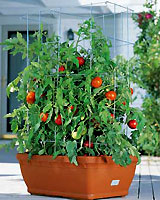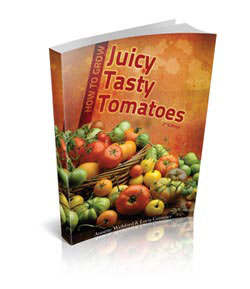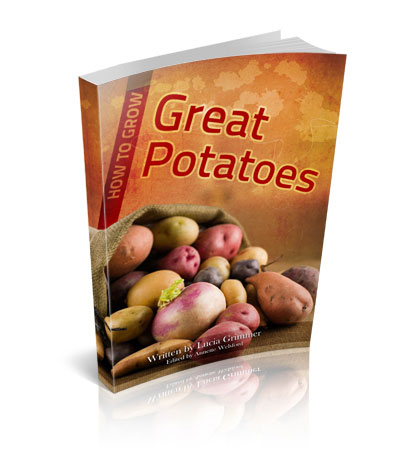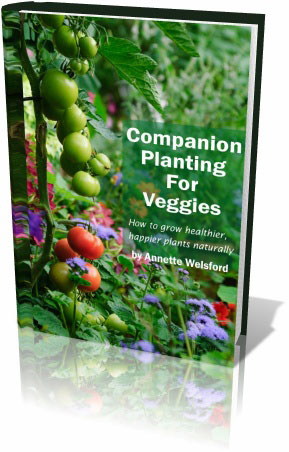How to Grow Vegetables in Containers
With the difficult weather that many regions have experience over the last year, the prices of many vegetables have hit peaks rarely seen before. This is bad news on the ‘hip pocket’!
The good news is that you don’t have to pay these high prices. You can have a lot of fun growing your own chemical free vegetables at home. If you live in an apartment or have limited garden space, growing in containers is the way to go.
What do You Need to Start Growing Vegetables in Containers?
Container Types
Almost a ny container can be used, as long as it is deep enough. Some people use Kaylite vegetable boxes which they pick up from their green grocer; others use wooden boxes. Synthetic pots, buckets, ceramic pots and terracotta pots can be used, however be aware that with the latter watering can be tricky because terracotta is porous and draw moisture out of the soil.
ny container can be used, as long as it is deep enough. Some people use Kaylite vegetable boxes which they pick up from their green grocer; others use wooden boxes. Synthetic pots, buckets, ceramic pots and terracotta pots can be used, however be aware that with the latter watering can be tricky because terracotta is porous and draw moisture out of the soil.
If the container is sufficiently deep, you can even grow root crops such as carrots, parsnips and turnips.
It is a good idea in warmer climates to use a light coloured container – otherwise you may risk ‘cooking’ the roots of your plants. In cooler climates, dark colored containers will absorb warmth and help to keep the roots warm.
Containers with self-watering systems are useful – but all containers need to have drainage holes and preferably a saucer to stand in, or the drain-off may discolor your floor.
Soil Preparation
Purchase a good quality, well-draining potting mix. It either needs to be of a coarse texture or have vermiculite mixed in. If the potting mix doesn’t include fertiliser in it when you purchase it, you’ll need to add some. Use a general NPK blend and ensure it is evenly and thoroughly mixed. It is best not to use garden soil, because it will compact in the pot and your plants will not grow that well – especially root crops. It probably won’t drain well, and might contain weed seeds.
Some gardeners like to add extra manure to their containers (instead of fertilizers). Most manures will only add a small amount of nutrient – so I believe it is best to also add fertilizer. When adding manure, you will need to use very, old well broken down manure. A great tip is to create a mix of 10% rotted manure and 90% water and let it steep for a week. After a week, mix about 20% of the manure tea into a watering can and apply to your container plants. Don’t be tempted to increase the ratio above 20% because you may burn your vegetables. Likewise, fresh manure is not recommended either because it will burn your tender young veggie plants, and of course it doesn’t smell that pleasant!
Once your vegetables are planted, you can top up your nutrients by using liquid fertilisers every second week. If using this approach, use a nitrogen dominant fertiliser for the first 6 weeks, and then switch to a potassium dominant fertilizer in the last 6 weeks. Dilute and apply as directed on the label. Other products such as fish-based emulsions are good for maintaining the texture of your potting mix and will also add amino acids – which your plants need.
When establishing your plants, the use of seaweed will help establish the roots. Incidentally, seaweeds are NOT fertilisers – unless fertilisers have been added into the bottled mix! Seaweeds contain natural plant growth hormones.
Sunlight
All vegetables require sunlight – usually about 6 hours per day. However, if you live in a hot climate, you may have to shade your plants in the middle of the day to avoid sunburn. In cooler climates you need to try and keep your plants warm – put them in the sun in the day, and bring them in at night. Never put plants out in the sun without hardening them first.
Watering
This is probably the hardest part of container gardening – getting the balance right between too much water and too little. In hot climates, you may need to water twice per day, whilst in cooler climates only once per day. Always check by poking your finger into the soil up to your knuckle to see whether it is moist all the way down. Growing vegetables consume large amounts of water – especially once they start to flower (if they do), or as they reach maturity.
Good drainage is important, so always ensure that the containers have drainage holes so that your plants do not sit in soggy soil.
Vegetable Varieties
You can grow almost any vegetable in a container. Your only limiting factor is the depth of the container.
Good luck and have fun!!
Tags: container gardening, growing in pots, vegetable gardening












